The Great South American Eclipse
2 July 2019
La Serena, Chile
Unless otherwise noted, text and photos by Ed Hedemann (click on photos to enlarge)
Weather was perfect (though chilly since July is, after all, winter in Chile), the sky was clear, we could see the horizon right down to the Pacific Ocean. We — NYC eclipse chasing friends Peter and Pamela, Ruth and I — didn't have far to go the day of the eclipse (if you discount our 10-hour flight due south from NYC to Santiago a few days earlier).
As luck and celestial mechanics would have it, La Serena (pop. 200,000 and the second oldest city in Chile after Santiago) is a charming beach town just south of the Atacama Desert. Consequently, chances of clear skies were promising. Chileans and tourists from around the world flocked to the city or fanned out on roads heading inland to reputedly even better weather and longer duration of totality. With total solar eclipses, every second counts, so thousands were committed to travel inland.
Because the eclipse-day forecast was excellent for La Serena and despite the loss of a few seconds (up to 2 min 36 sec, compared to La Serena's 2 min 15 sec), we decided to stay put and join the Chilean hoi polloi (and a few foreign tourists) watching from La Serena's vast beach, and avoid the inevitable hassle of navigating traffic-choked roads in and out. Turns out that was a very good decision as all roads out following the eclipse were horrendously jammed.
| THE CHRONOLOGY |
|
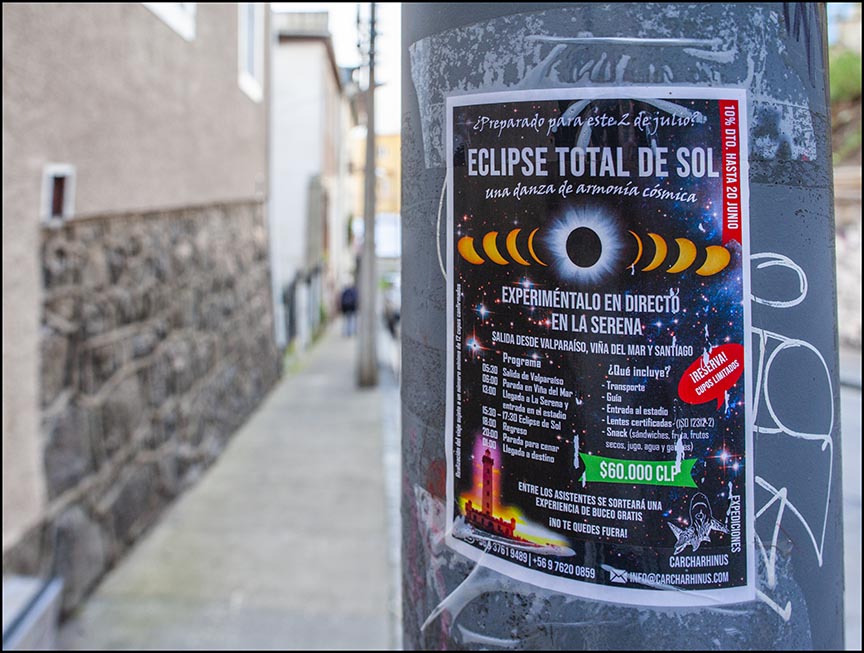 |
Eclipse fever was all over Chile, as evidenced by this street flyer in Valparaiso — 250 miles south of La Serena — several days before the big day. |
 |
First contact at 3:23 pm just as the moon begins to pass in front of the sun (photographed through a solar filter); note slight dent at 7 o'clock position. |
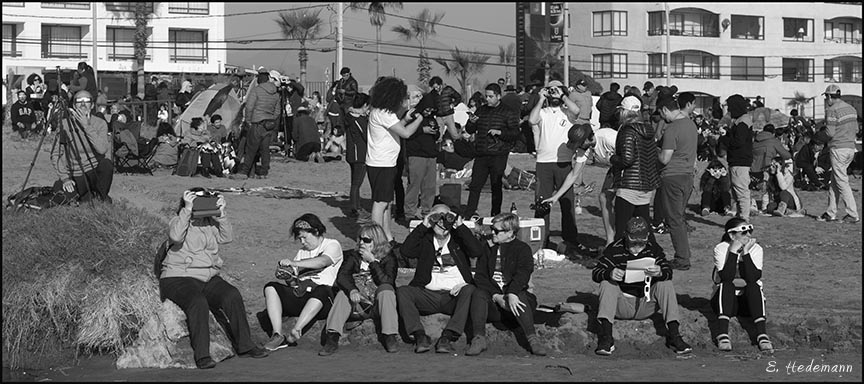 |
The beach scene 40 minutes before totality. |
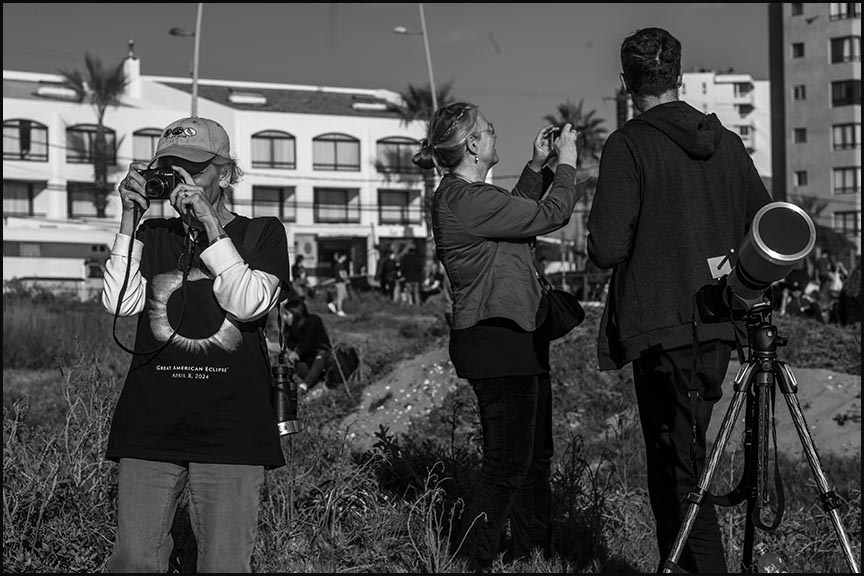 |
Ruth with Bettina and Andreas, an eclipse-chasing couple from Germany. |
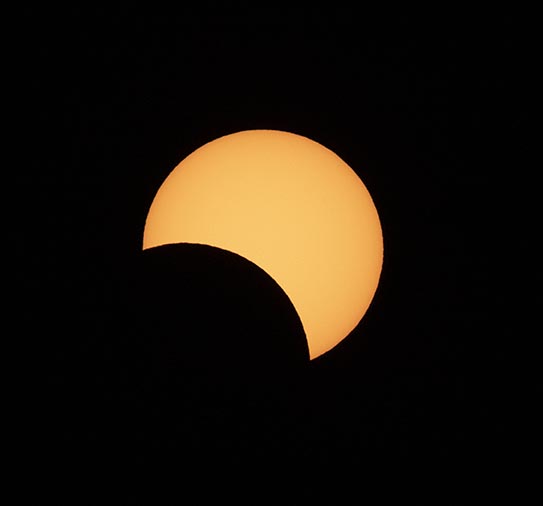 |
Sun — photographed through solar filter — about half hour after first contact and 40 minutes from totality (2nd contact). |
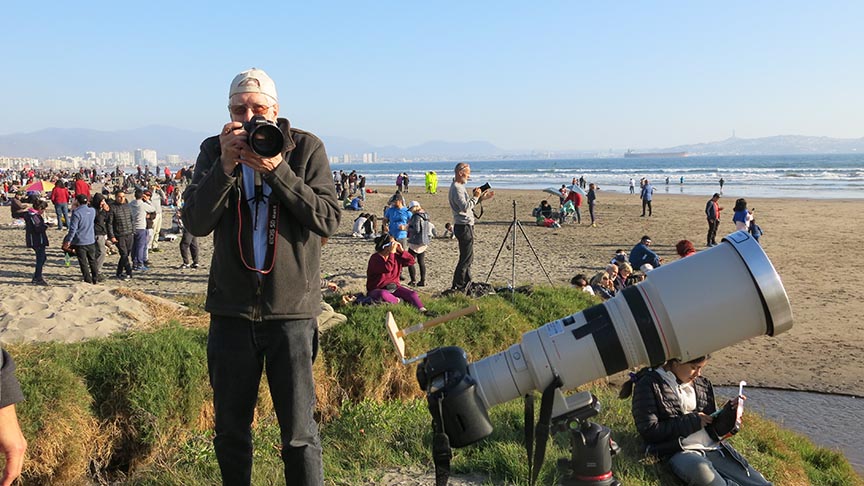 |
Ed with cameras and the scene on La Serena's vast beach before totality. Photo by Ruth Benn. |
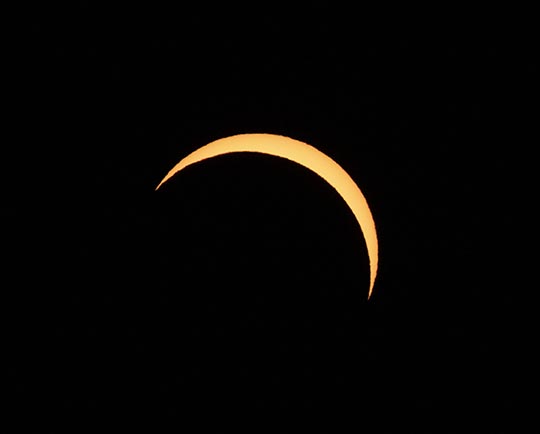 |
Solar filter-protected sun photographed about 6 minutes before totality. |
 |
Ruth in her partial eclipse observing position on sand dune as totality looms. |
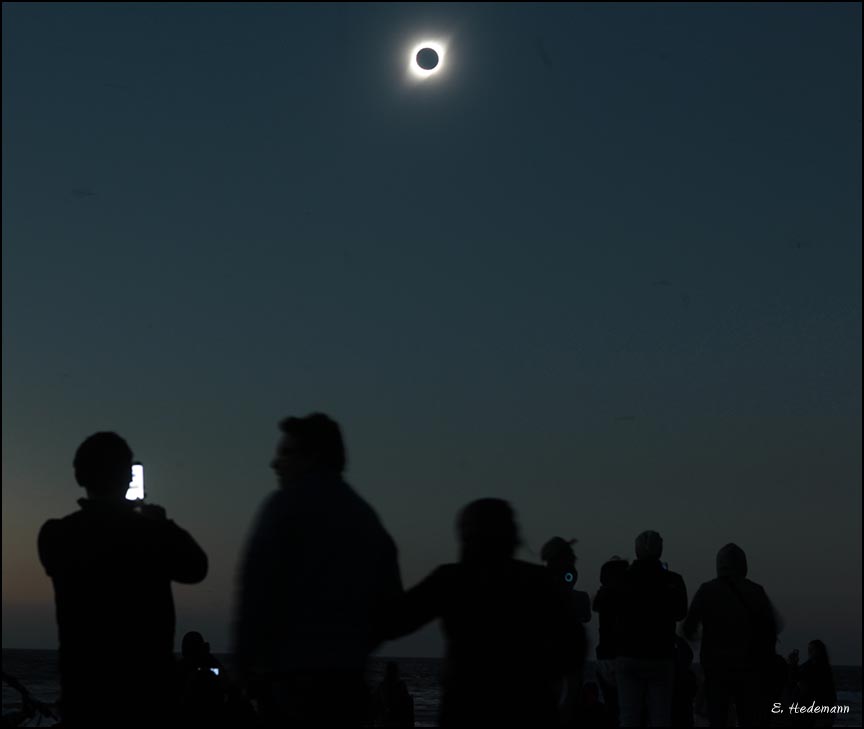 |
4:39 pm: TOTALITY arrives, as many observers attempt to record the event with their smartphones. |
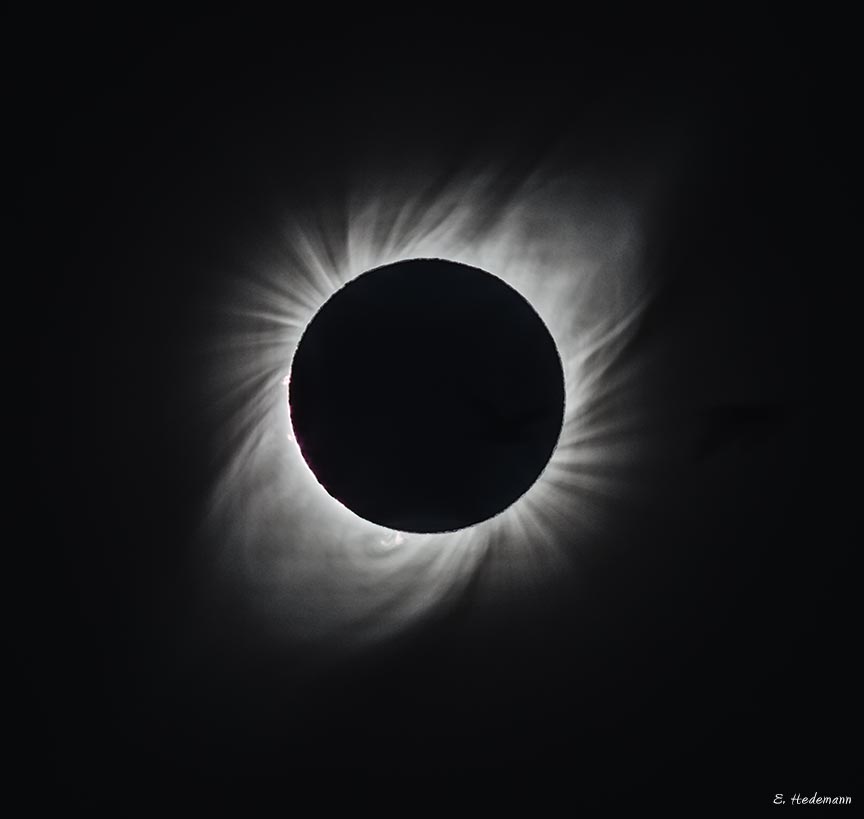 |
Because a single photo cannot capture coronal detail as well as the naked eye, this image was created by layering nine photos of different exposures to bring out that detail and approximate what the eye sees. |
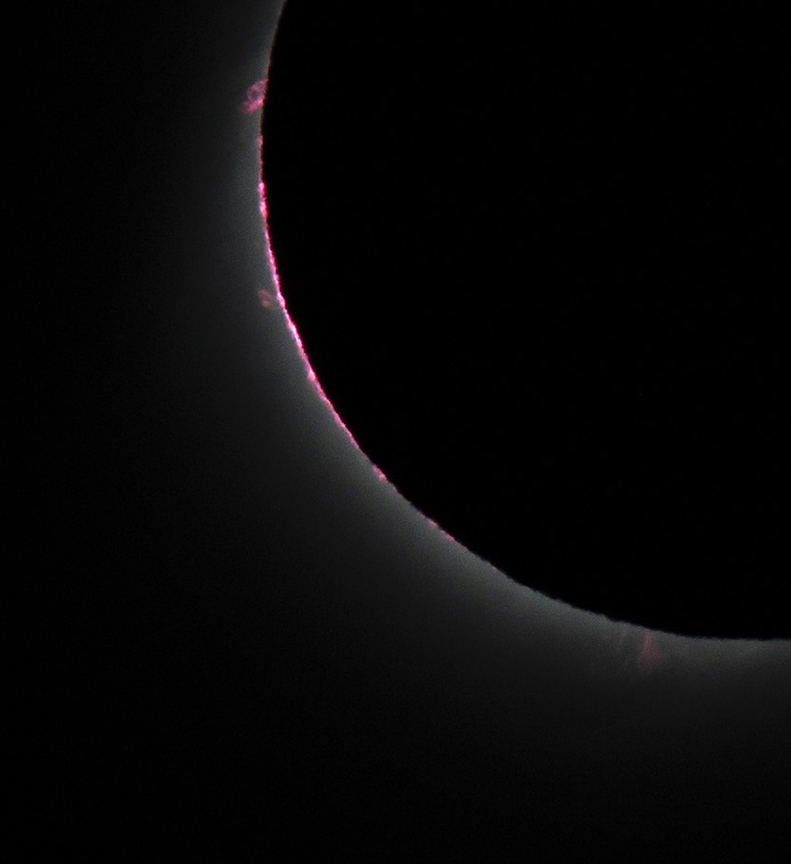 |
Flare and prominence detail at the surface of the sun. |
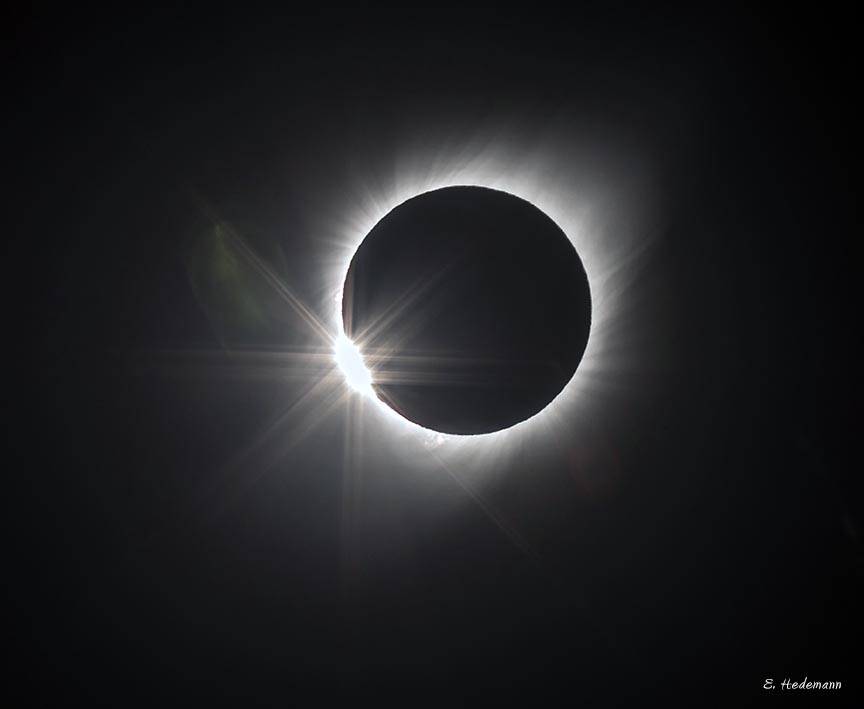 |
The "diamond ring" effect (sun light begins to pour through a valley on the rim of the moon) as totality just ends. |
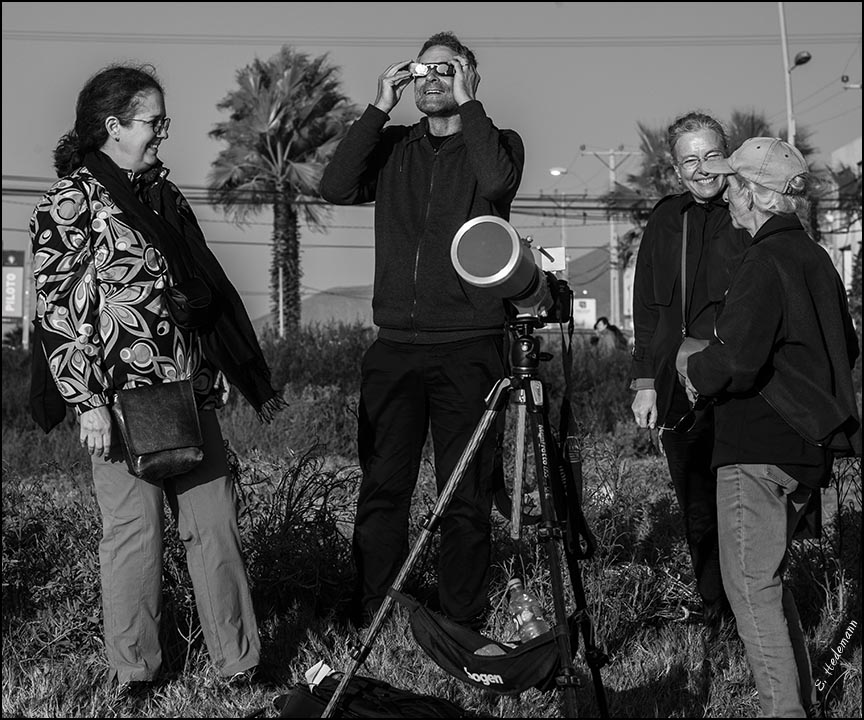 |
Pamela, Andreas, Bettina, and Ruth 15 minutes after totality ends. |
 |
Sunset on the beach 5 minutes until 4th contact (when the moon no longer covers any part of the sun) and 15 minutes before sunset. Sadly, Peter's head cannot duplicate what the moon accomplished about an hour earlier. |
| |
|
| |
|
OUTTAKE: We had always heard that just before and during totality, birds go to roost, cows head back to the barn, animals are tricked into thinking night had come. We never paid too much attention to them during the precious seconds of totality (this was Ed's 8th and Ruth's 7th total solar eclipse trip) because we were too busy being awed by and photographing it.
However, La Serena shore birds hadn't gotten the memo, including this annoying gull that intruded across the eclipsed sun just as Ed took one automated sequence of photos. |
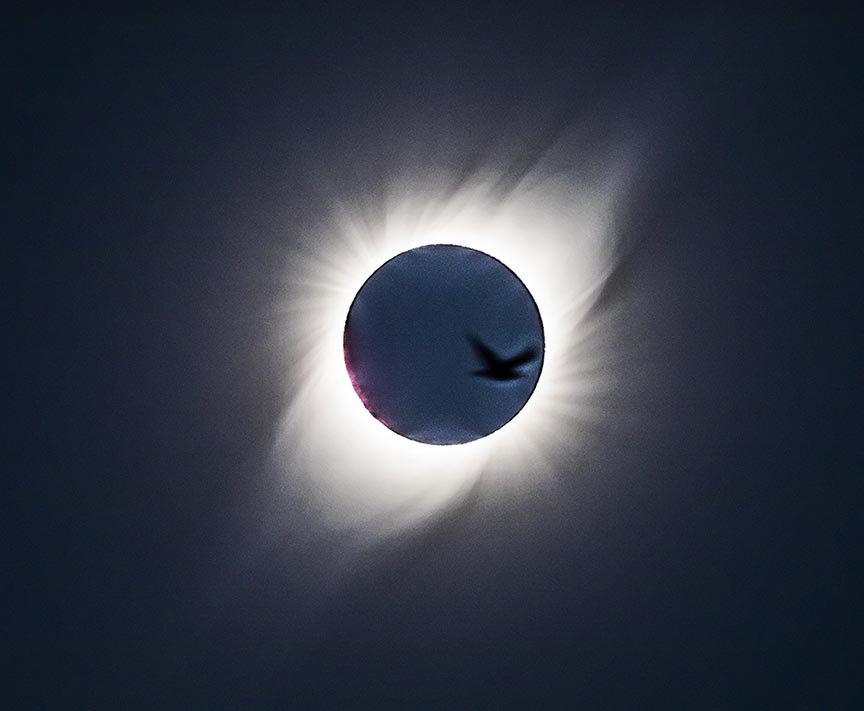 |
 |
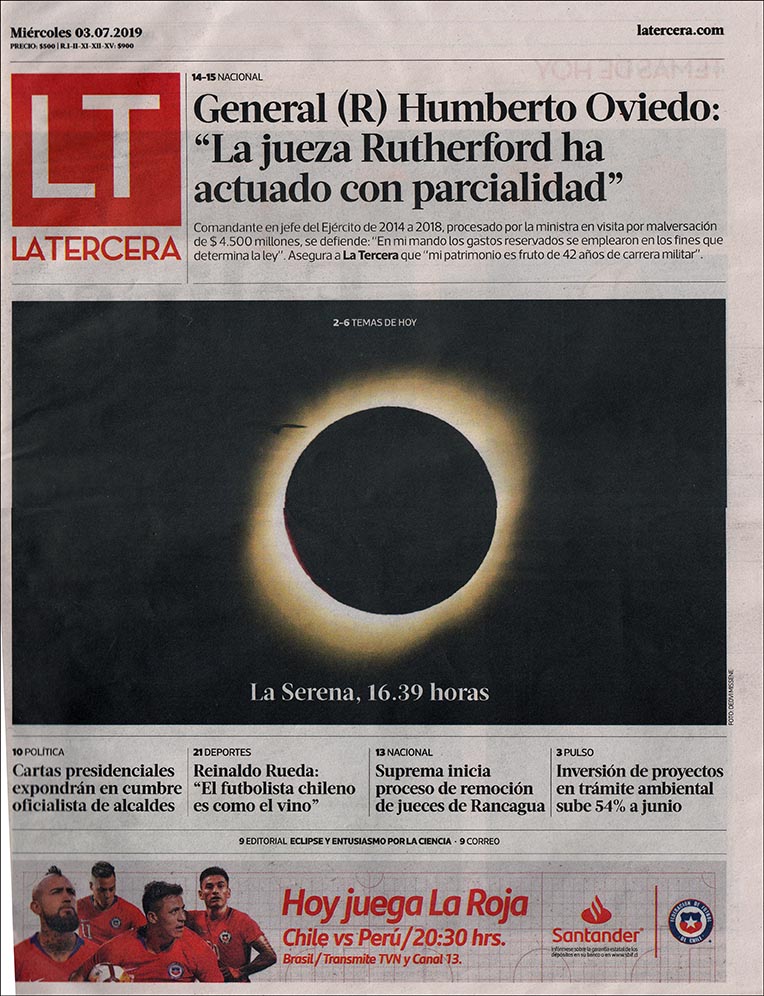 |
Local newspaper headline
the next day. |
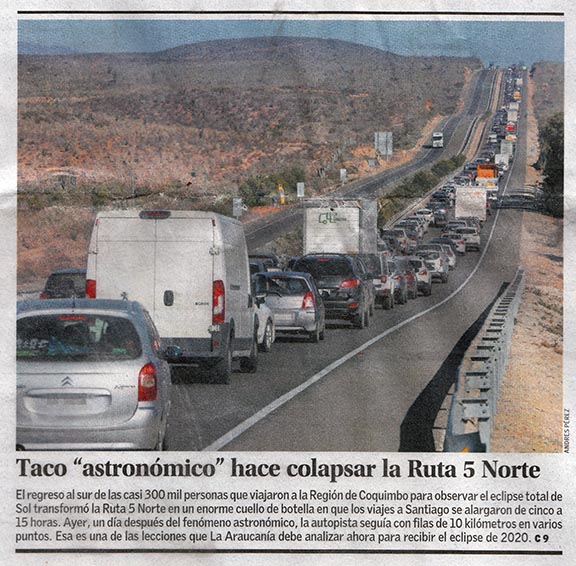
|
The day after the eclipse, the media reported on the "colapsar la Ruta 5 Norte," that is, the "collapse" of the Panamerican Highway (as Route 5 is also known) on the way back to Santiago. A highway collapse is the scary-sounding Chilean idiom for a major traffic jam |
Other photos from Chile:
SANTIAGO
VALPARAISO
PANAMERICAN HIGHWAY
LA SERENA |
|
NEXT TOTAL SOLAR ECLIPSES
2020 Dec 14: South Pacific, Chile, Argentina, Atlantic; max 2m 10s
2021 Dec 4: Antarctica; max 1m 54s
2023 Apr 23: Indonesia, Australia, Papua New Guinea; max 1m 16s
2024 Apr 8: Mexico, United States, Canada; max 4m 28s
2026 Aug 12: Arctic, Greenland, Iceland, Spain; max 2m 18s
2027 Aug 2: Spain, N. Africa, Saudi Arabia, Yemen, Somalia; max 6m 23s
2028 Jul 22: Australia, New Zealand; max 5m 10s
|

















